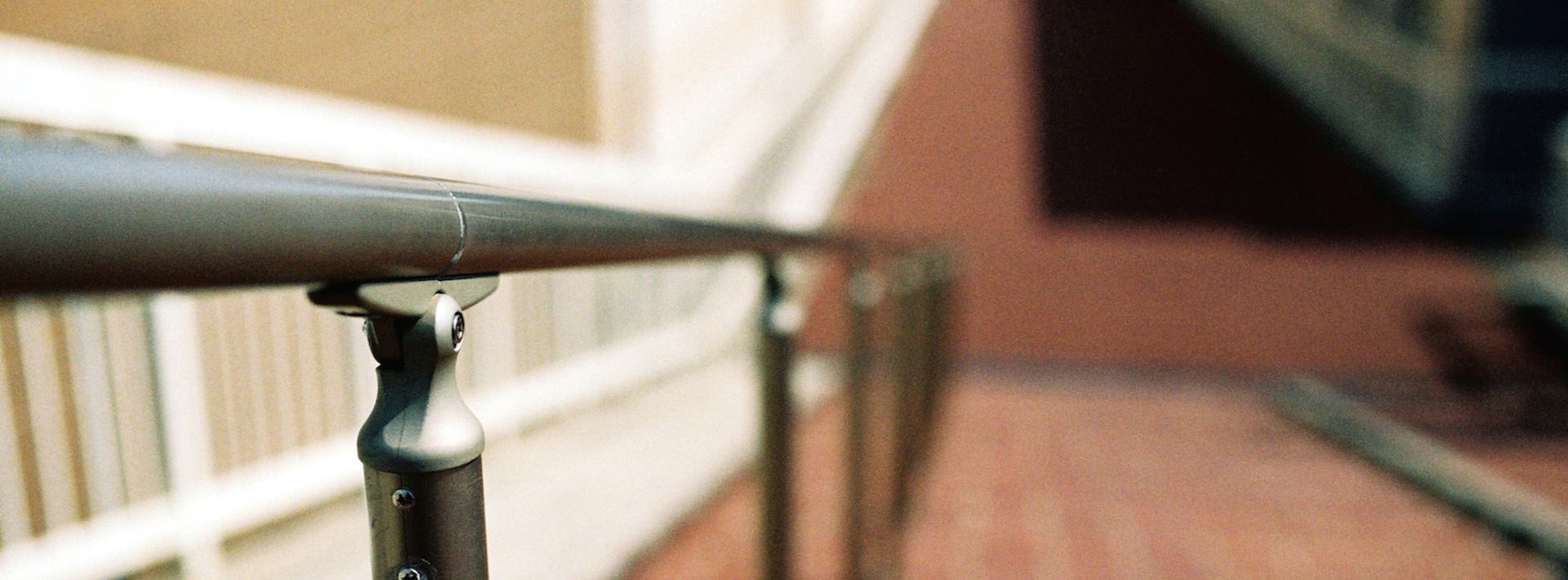Blog
DDA Guidance Part 3: This post covers the impact of the DDA on handrail design
Additional details are to be found in Part M of the Building Regulations.
Handrails to steps
Where a stair is used simultaneously by a large number of people, and the overall unobstructed width of steps is greater than 1800 mm, an additional handrail, or handrails, should be provided to divide the flight into separate channels. No channel should have an unobstructed width of less than 1000 mm or more than 1800 mm. The division of wide flights into separate channels will allow an individual who may have less strength on one side or the other to be within easy reach of support. An ambulant disabled person may be weaker on one side and therefore a handrail on each side of the flight is essential for support. Any flight of steps that consists of two or more risers should be provided with a continuous handrail on each side. If any stairway consists of two or more flights, separated by a landing or landings, each handrail should, if feasible, be continuous throughout the series of flights.
Height and extension of handrails
The vertical height to the top of a handrail should be between 900mm and 1000mm from the pitch line of a flight and between 900mm and 1100mm from the surface of a landing. Second, lower handrails for children and people of restricted growth are helpful and should be fixed at heights of between 550mm and 650mm. Each handrail should extend at least 300 mm beyond the first and last nosing; this extension allows an individual to steady or to brace themselves before ascending or descending. As much of the extension as possible should be horizontal and the extension should not intrude into any circulation route.
Handrail design
A handrail should be: a) of an oval or circular profile (a non-circular handrail with a broad horizontal face is as easy to grip as a circular handrail and gives better hand and forearm support) b) finished so as to contrast in colour and luminance with the surroundings against which it is seen, without being highly reflective c) easy and comfortable to grip (slip resistant) with no sharp edges, smooth and not cold to the touch (the use of Ferrocast, timber or certain coatings, such as powdered nylon, is recommended as a finish) d) colour / tonal contrasted handrails are essential to assist partially sighted users. The positioning of the handrail support is important in achieving the uninterrupted use of the handrail and avoiding shock through the hand hitting the support. To avoid impeding finger grip, consideration needs to be given to the spacing of a handrail away from the adjacent wall and to the design of any system of support for the handrail. For an individual with impaired vision, the change in slope of the handrail and its return into a wall will signal the start or finish of the flight. At the start and finish of handrailing, the handrail should be terminated in a way that will reduce the risk of clothing being caught. This may be achieved by returning the handrail to the wall or floor or, where the handrail extends beyond balustrading, having a minimum rounded downturn of 100mm, or by terminating it with a scroll or similar feature.
Handrail dimensions
A circular handrail should have a diameter of at least 40mm but not greater than 50mm. A handrail with an oval profile should have dimensions of 50mm wide and 38mm deep. The profile should have rounded edges with a radius of at least 15 mm. There should be a clearance of between 50mm and 60mm between a handrail and any adjacent wall surface (subject to a maximum intrusion of 100mm into the ramp or stairway). Any handrail support should meet the handrail, centrally, on its underside so there is no obstruction to the passage of the hand along the rail. The clearance between the bottom of the rail and any cranked support, or continuous balustrade, should be at least 50mm to minimize the risk of the handrail supports interrupting the smooth running of a person’s hand along the rail. There should be a minimum of 600mm clear space above the handrail. Background: this post was originally partly prepared through my role as a member of the technical comittee of the the Landscape Institute and partly as Woodhouse continue to consult with clients, charities and landscape architects on the subject of the DDA.








